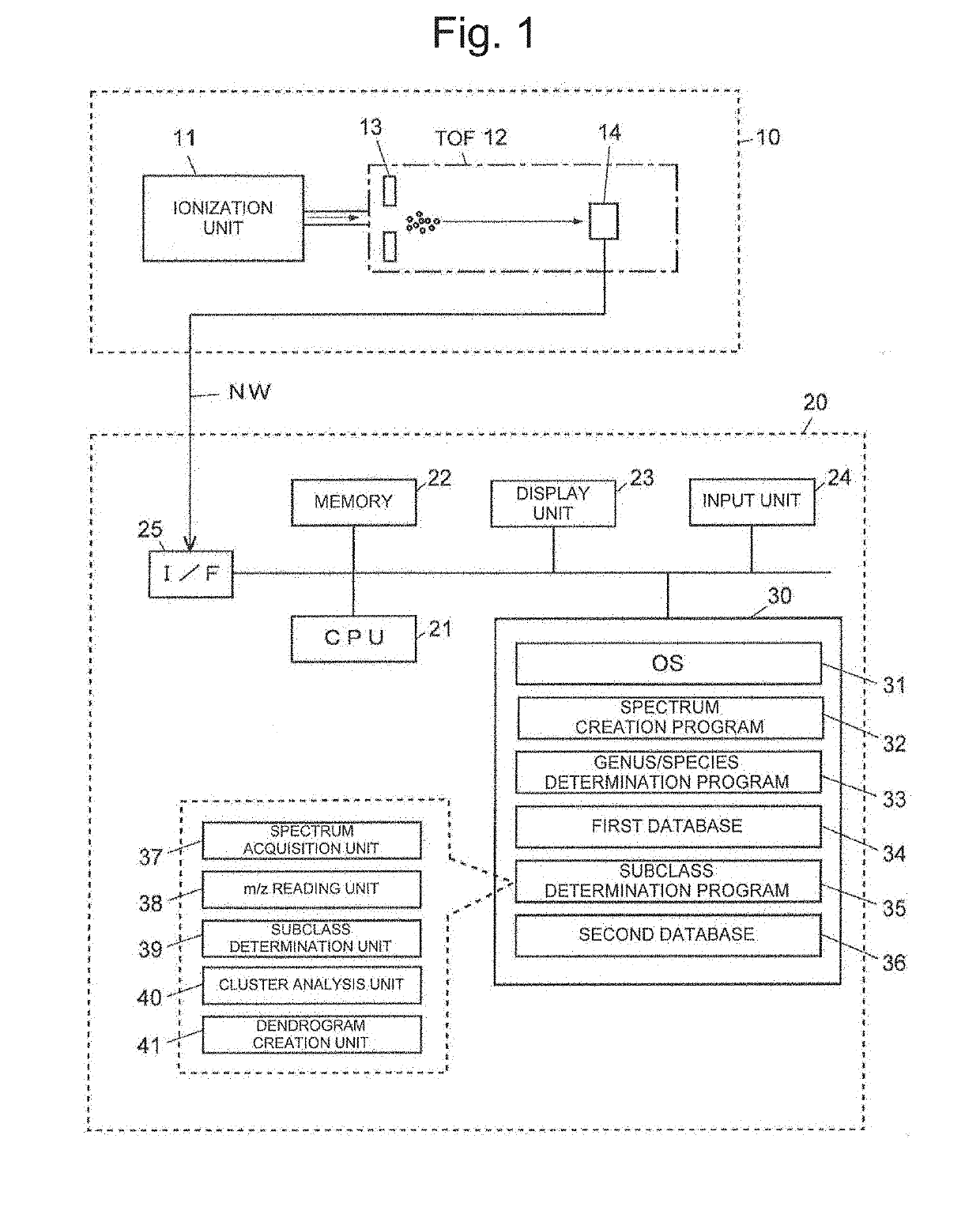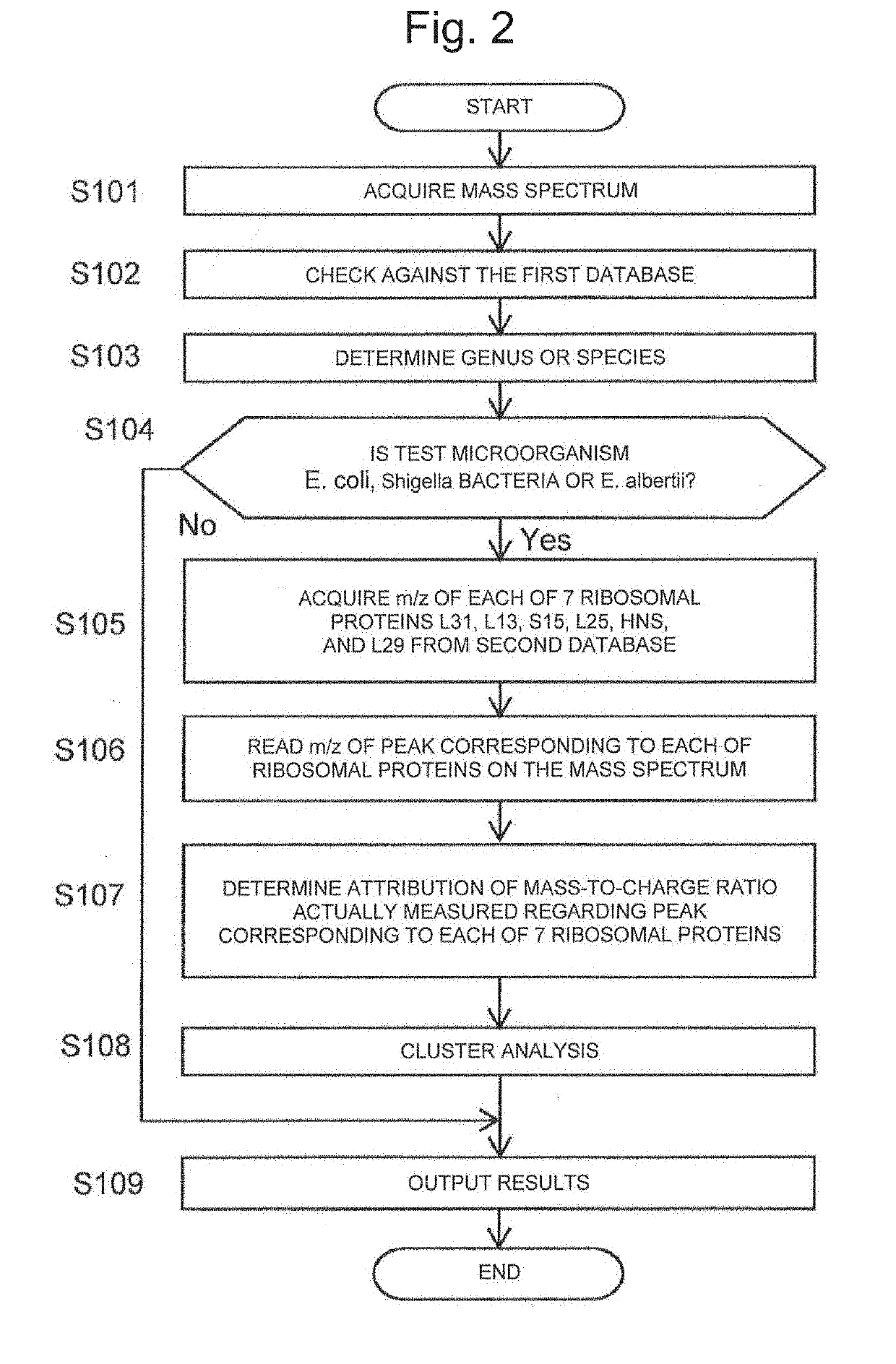Method for discriminating microorganism
a microorganism and mass spectrometry technology, applied in the field of mass spectrometry discrimination of microorganisms, can solve the problems of time and complicated operations, and achieve the effect of quick discrimination
- Summary
- Abstract
- Description
- Claims
- Application Information
AI Technical Summary
Benefits of technology
Problems solved by technology
Method used
Image
Examples
examples
(1) Strains Used
[0094]Escherichia coli, Escherichia albertii, and Shigella bacteria available from culture collection institutes of RIKEN BioResource Center, Japan Collection of Microorganisms (JCM, Tsukuba, Japan), National Institute of Technology and Evaluation, Biological Resource Center (NBRC, Kisarazu. Japan) and National BioResource Project GTC Collection (Gifu, Japan) shown in FIG. 3 were used for the analysis.
(2) Analysis of DNA
[0095]The DNA sequences of the ribosomal protein genes that may be the S10-spc-alpha operon and biomarkers shown in FIG. 4 were analyzed with a primer designed based on the consensus sequence. More specifically, the genomes were extracted from each strain by a conventional method, and using the genomes as a. template, the target gene region was amplified by PCR using KOD plus. The obtained PCR product was purified and used as a template for sequence analysis. Sequence analysis was performed using Big Dye ver. 3.1 Cycle Sequencing Kit (Applied Biosyste...
PUM
 Login to View More
Login to View More Abstract
Description
Claims
Application Information
 Login to View More
Login to View More - R&D
- Intellectual Property
- Life Sciences
- Materials
- Tech Scout
- Unparalleled Data Quality
- Higher Quality Content
- 60% Fewer Hallucinations
Browse by: Latest US Patents, China's latest patents, Technical Efficacy Thesaurus, Application Domain, Technology Topic, Popular Technical Reports.
© 2025 PatSnap. All rights reserved.Legal|Privacy policy|Modern Slavery Act Transparency Statement|Sitemap|About US| Contact US: help@patsnap.com



